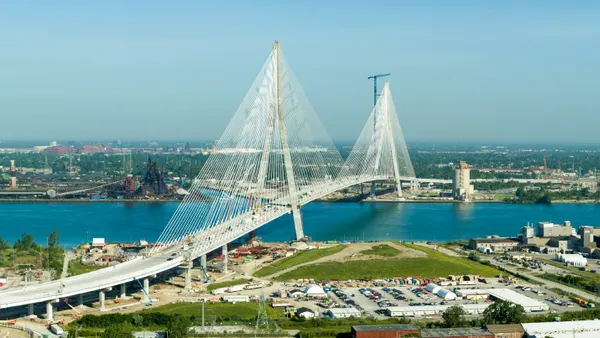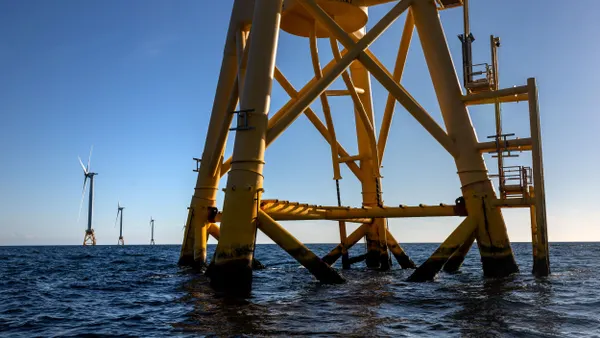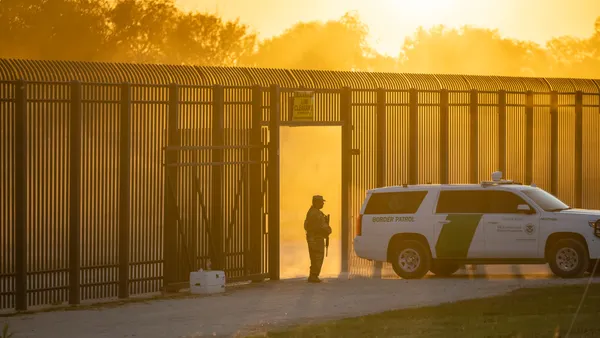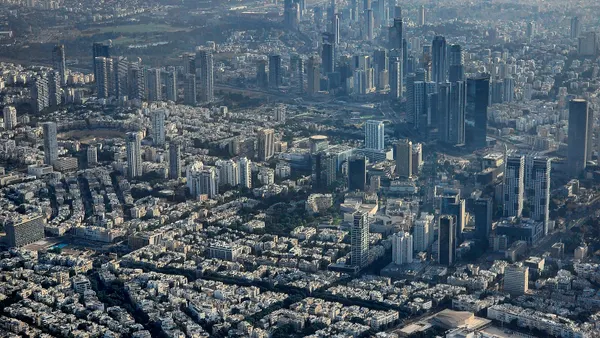Dive Brief:
- New York Gov. Andrew Cuomo this week announced that, despite the COVID-19 pandemic, the New York City Metropolitan Transportation Authority's New York City Transit agency completed a major tunnel rehabilitation project $100 million under budget, six months earlier than the originally proposed deadline and three months ahead of its own revised schedule, all while avoiding full shutdowns.
- Under the original plan, crews would have demolished the walls of the two tubes that make up the Canarsie Tunnel, which connects Manhattan and Brooklyn via the L train. That move would have necessitated shutting down service. Instead, the vast majority of demolition was avoided by using an industrial, reinforced finer polymer, forming a new wall with structured panels that wrap around the existing, damaged wall.
- Other improvements to the Superstorm Sandy-damaged tunnel include a racking system to suspend fire-resistant cables on the side of the tunnel instead of installation in a concrete bench wall; new tracks, new plated and continuous welded rail; new discharge lines, pipes and controls that will help prevent flooding; a new lighting system and a new fiber optic monitoring system that will transmit data and alerts to the rail's control center. A new station, along with additional components of the project, will be complete by this fall.
Dive Insight:
In January 2019, Cuomo brought on consultants from the engineering departments at Columbia University and Cornell University with the goal of finding a more efficient way to tackle the tunnel rehab. This effort resulted in the integration of construction techniques used around the world but never before executed on a project in the United States.
The USDOT could end up using a similar solution for the Hudson River tunnel project. During her Feb. 27 testimony before the House Appropriations Subcommittee on Transportation, Housing and Urban Development, and Related Agencies regarding President Donald Trump’s fiscal year 2021 budget request, Transportation Secretary Elain Chao told lawmakers that the department had already started working with Amtrak on a plan to rehab the tunnel instead of building new ones in the short term.
At current estimates, building new tunnels and then restoring the existing tubes, also damaged during Sandy, would cost approximately $11.3 billion. The Trump administration has refused to fund the massive capital project, even though New York and New Jersey lawmakers maintain that they had struck a deal with officials in the Obama administration that would see the federal government pay for half.
This repair approach, she told the committee, would also allow Amtrak to start work on the tunnel, which connects New Jersey with New York City, up to 10 years ahead of its new construction schedule.
It's clear, however, that Chao is a fan of Cuomo's decision to move forward with a rehab rather than a replacement. "We want to go back to [Cuomo's] idea, get those experts to look at the Hudson tunnel to see how we can, in the interim, repair it.”
MTA Chairman and CEO Patrick Foye took the opportunity to tout the MTA's recent efforts to streamline its construction operations, asserting that the innovative approach used on the Canarsie project is proof that the authority is committed to doing things differently to the benefit of our customers.”
Last year the MTA made major changes to its construction operations in an effort to streamline capital project bureaucracy and to appease lawmakers and the general public that it could execute its $51 billion capital plan in a more prudent way.
However, according to attorney Erik Ortmann, vice-chair of the construction law practice at Kaufman Dolowich Voluck LLP in New York, it might be a little too soon to chalk up the success of the Canarsie project to the MTA's internal changes.
"Every project is not going to have the same components, so you can't say it will happen with all projects," he said. "[Foye's statement] does not account for some of the exceptional aspects of this project."
But if Foye was referencing the agency's willingness to reach out in new ways, Ortmann said, that could be a harbinger of things to come. For example, the MTA, when faced with a potential design change, typically would bring in an engineer from the private sector to consult on the project. In the case of the Canarsie tunnel, and at Cuomo's urging, the authority was able to tap into the academic community for help with a solution.
So, for right now he said, the MTA still has to prove the efficacy of its new policies and administrative changes.
"But they're headed in the right direction," Ortmann said.












